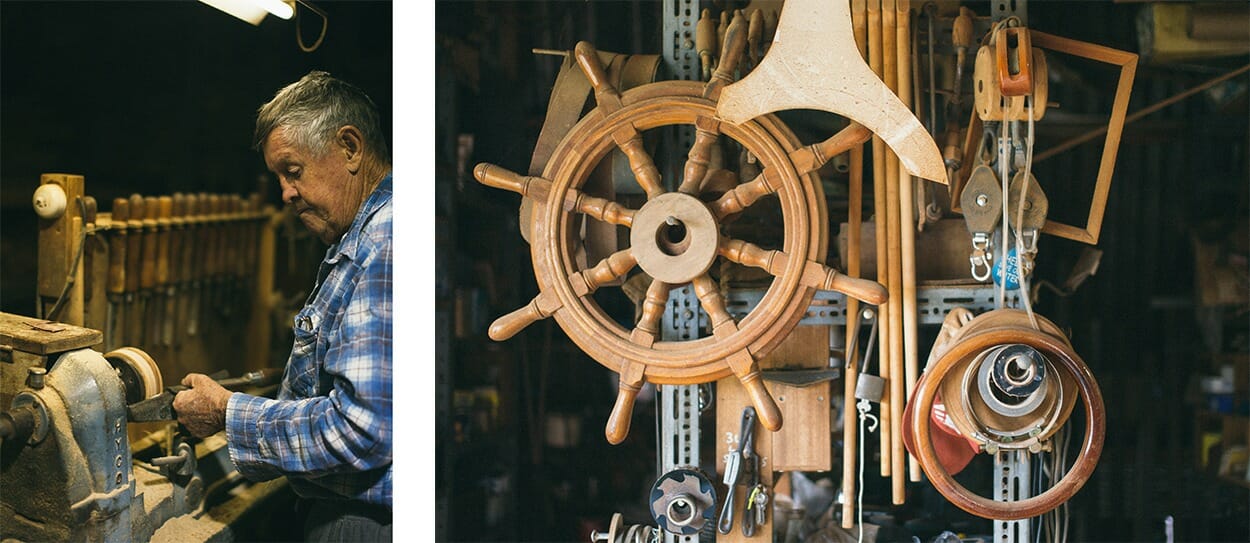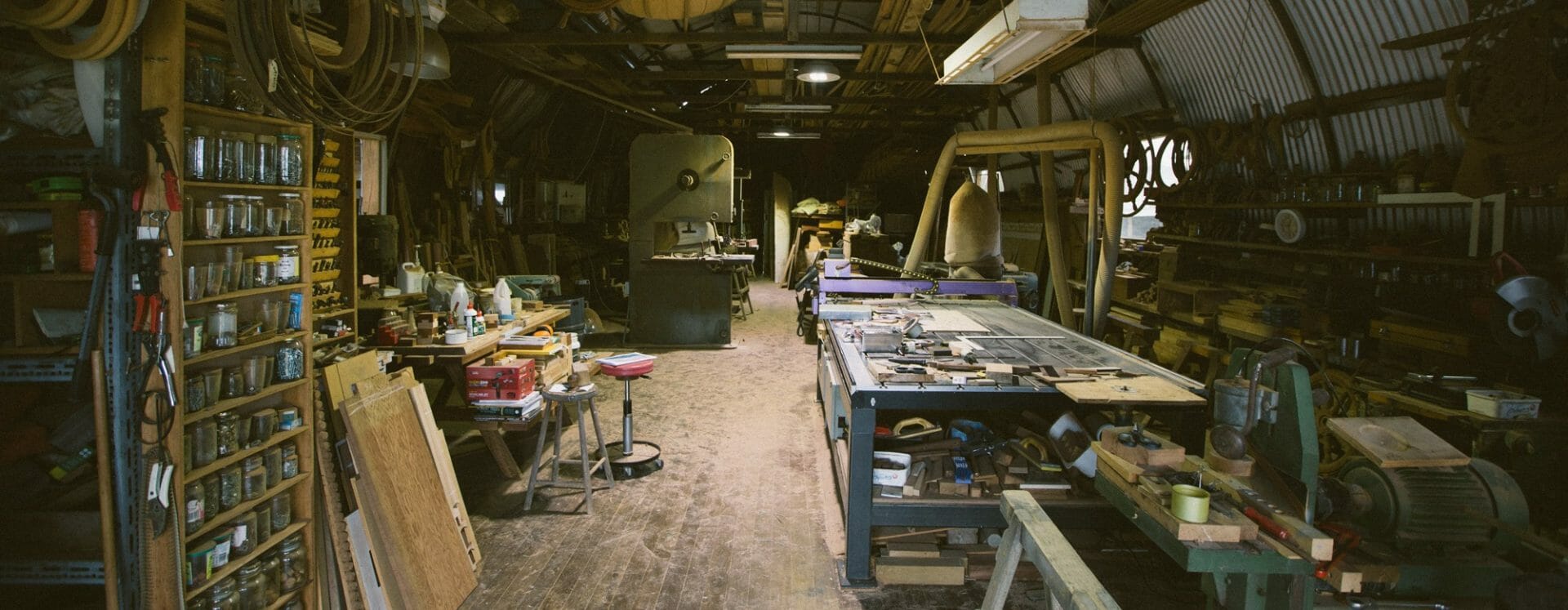Paying our respects to Harvey Jahnsen – Master Boat Builder
Give a man a fish and he’ll eat for a day; teach a man to fish and he’ll eat for a lifetime.
Please pardon the platitude, but sometimes we forget, in this ready-made age, that honouring tradition is more than a flag, a slogan, a public holiday. Australians, from First Nations to newcomers, have worked the land and braved the seas to survive, and the traditions and skills that supported our survival deserve to be remembered.
Harvey Jahnsen understands this. He grew up working alongside his boat-builder father Alf, in the northern NSW area of Foster-Tuncurry. Together they built hundreds of vessels: yachts, ferries, fishing boats, dinghies, racers, cruisers. Throughout the 20th century, Jahnsen boats kept business in their area afloat, quite literally. But Harvey is one of the last commercial wooden boat-builders left.
“There’s nobody around to build boats the way we used to,” he says with resignation. His knowledge and skill will not be passed on to the next generation to be used as Harvey and Alf did.
The passing of this tradition from our shores is a sign of our times. Pragmatically, wooden boat building goes the same way as so many other practical skills. Perhaps this is the path forward in this age of technology and rapid transit, but a tradition that was so integral to our culture deserves honouring and remembering.
Harvey is 77 years old now and although his health does not allow him to make boats anymore, he is still sought after for advice from other boat-builders. He has little time for fibreglass or steel construction; wood is his passion.
Harvey’s niece, Tracey, is close to her uncle. She values the Jahnsen boat building history and would like to see Harvey’s legacy preserved in some way. As a child she watched her uncle and grandfather select the perfect piece of wood by closely studying the tree in the field. She laughs when remembering family picnics spent looking up at the trees, examining the shape of the branches to match them to the shapes of the boat in plan. Tracey refers to his collection of timber as a ‘timber library’.
They were perfectionists, she says.
The longevity of the Jahnsen boats is testimony to this perfectionism. Many of the yachts, ferries, fishing boats and launches built 60 years ago are still in service, with owners, Tracey says, amazed that the vessels are as watertight as the day they were launched.

To be able to make something like that is an art as much as a business.
The catalogue of Jahnsen craft is diverse, from more utilitarian fishing boats and ferries to sleek yachts and stylish cruisers. One can pick a Jahnsen craft by the elegant shape of its hull: a narrow un-raked bow, cutting directly into the water, curving mid-ship to a generous breadth. However, their ship building business grew from practical demands, so each boat was designed to suit its usage.
Tracey says of her grandfather’s attitude to his craft, “Alf built boats for a living, like someone else builds houses. There was a need for boats and he had the resources. It was a way to make a living from what was at hand: they had the water, the wood and the need. But whatever they did, they did well. If Alf made something that didn’t fit together perfectly, he’d throw it out and do it again. Although Alf was a gentle man he was hard on himself and quite hard on Harvey, in terms of getting it just right. He did it for love…you can tell that he loved doing it just perfectly.”
We visit the workshop for a guided tour from Harvey and Tracey. It was here that they drafted the outline of the craft on the floor, in scale. Many of the boats they made were too big for the shed, a large Nissen hut that Alf built after WWII, so these were constructed outside in the lot next door.

They also made scaled models of their designs, beautiful constructions that now hold Harvey’s memories of a time that has passed. The walls of the workshop are hung with decades of memorabilia, testifying to the beauty of their work.
Harvey fossicks about at the back of the shed and pulls out a piece of timber he tells us is 60 years old. If the timber is treated well, he says, it will last forever. He shows us a ship’s wheel, part of the helm, an artefact of great beauty, made from Australian red cedar and white beech, using timber that is 625 years old. This is one of many pieces Harvey will never part with – its value as a symbol of his past far exceeds its considerable commercial worth.
“Alf was a very generous man because he worked from the love of his craft,” says Tracey. “He passed that love on to Harvey. It was a true craft that began with the tree in the ground and ended with the boat in the water. Alf was a humble man and so is Harvey. But their craftsmanship transferred into the boats themselves and their reputation as master shipbuilders grew. The Jahnsen-built yachts became highly sought after for racing and pleasure craft, as well as the more practical boats.”
The future of the Jahnsen workshop is uncertain. Sourcing the timber is increasingly difficult and demand for wooden boats has declined, although an appreciation of the art and craft of the wooden boat has not.
Tracey understands the change but would like to see the workshop preserved as testimony to Australia’s shipbuilding heritage. She is talking to maritime museums and clubs, investigating sustainable ways to save the workshop. They say that to prepare for the future one must know the past. She envisages a working museum that provides experience for generations to come, that honours the craftspeople of the past, their knowledge and skill and the industry that kept Australia afloat.
For further information email [email protected]


